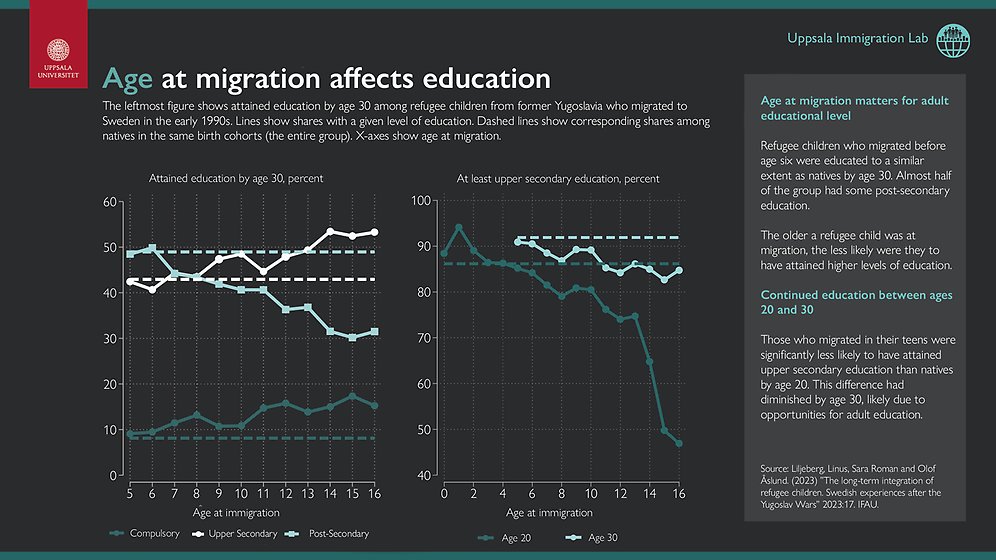Age at migration affects education
The leftmost figure shows attained education by age 30 among refugee children from former Yugoslavia who migrated to Sweden in the early 1990s. Lines show shares with a given level of education. Dashed lines show corresponding shares among natives in the same birth cohorts (the entire group). X-axes show age at migration.
Age at migration matters for adult educational level
- Refugee children who migrated before age six were educated to a similar extent as natives by age 30. Almost half of the group had some post-secondary education.
- The older a refugee child was at migration, the less likely were they to have attained higher levels of education.
Continued education between ages 20 and 30
- Those who migrated in their teens were significantly less likely to have attained upper secondary education than natives by age 20. This difference had diminished by age 30, likely due to opportunities for adult education.
About the article
Title: "The long-term integration of refugee children."
Authors: Linus Liljeberg, Sara Roman, and Olof Åslund.
Published by IFAU

